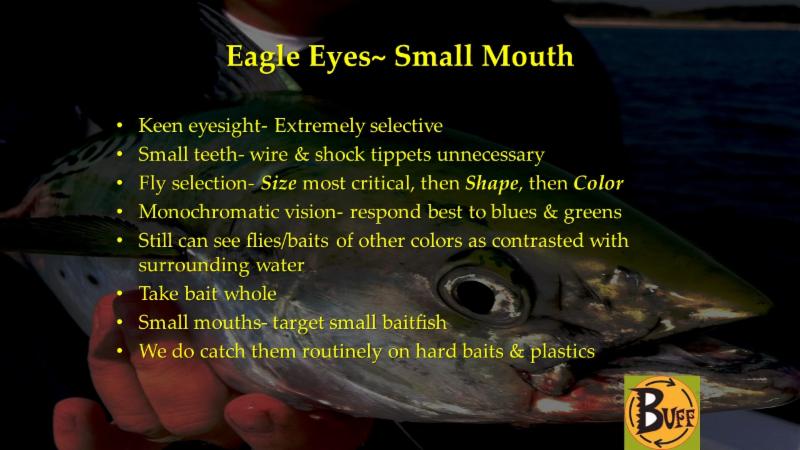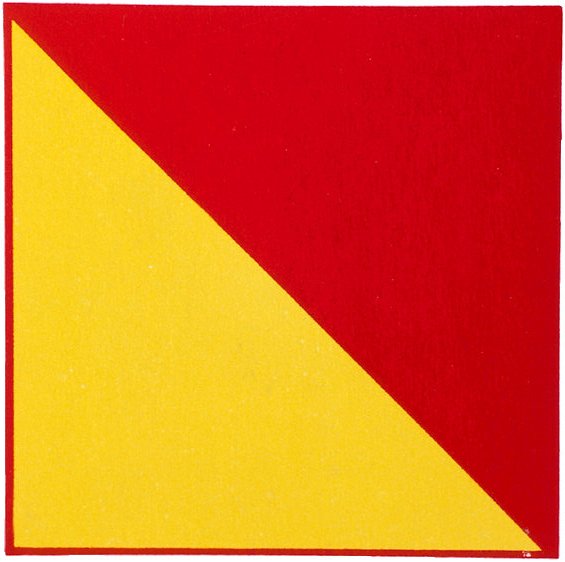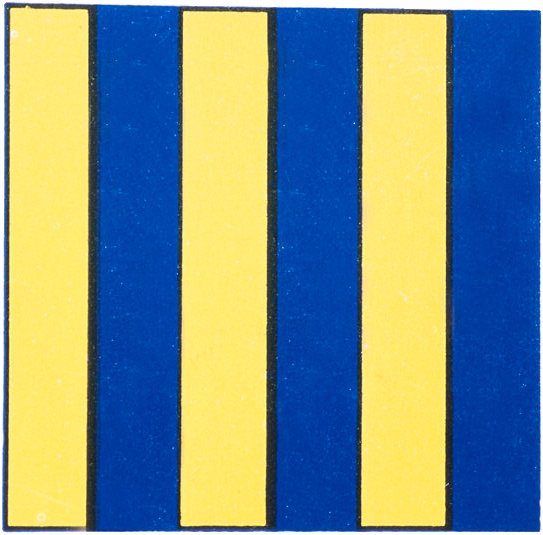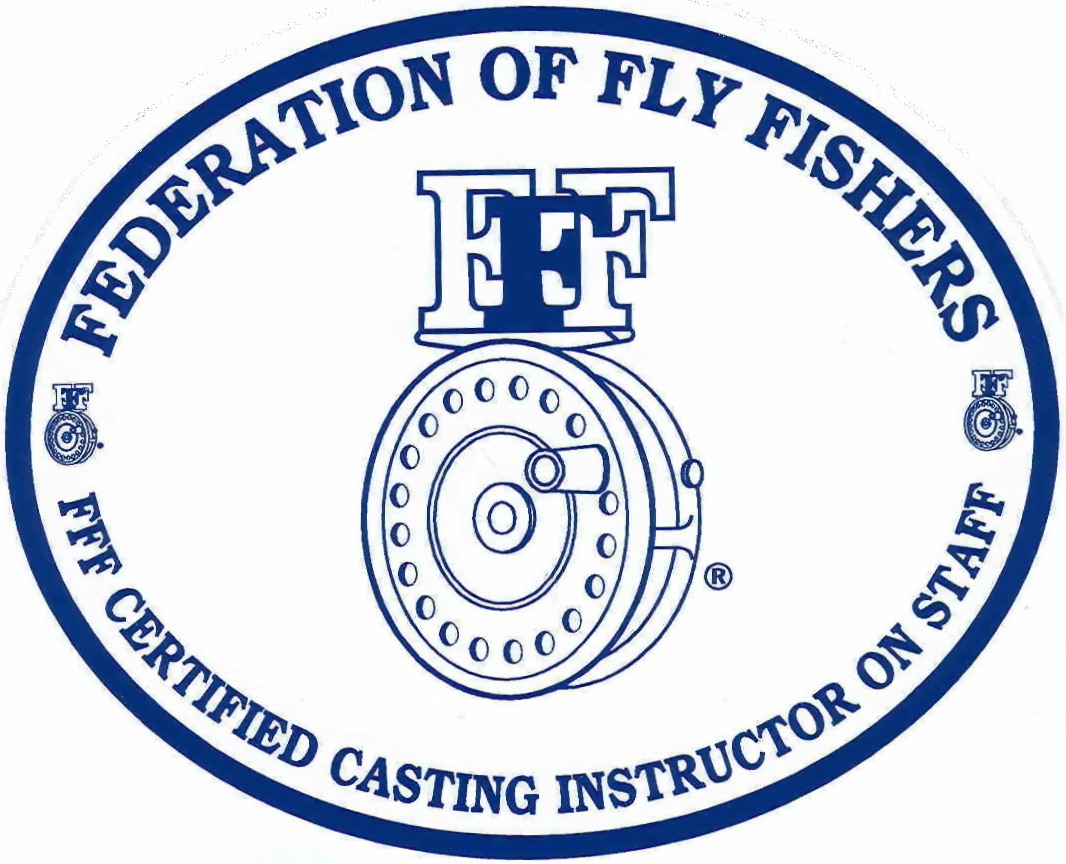False Albacore- Next on the hit parade
by Captain Jim Barr on 09/14/16
A false albacore caught on a fly or on light tackle is an unforgettable experience. September and early October bring scores of these fish to Newport area waters. If you are unfamiliar with these fish, the following slide copies were pulled from a PowerPoint presentation I gave this late winter at the Rhode Island Saltwater Anglers Association fishing show. They will help you better understand their physical characteristics. We don't travel far at all to find these ocean speedsters, in a typical fall we will find them in good numbers in Newport's near-shore waters and in the lower sections of Narragansett Bay.




 These fish are not necessarily difficult to catch, there's a lot of hype surrounding the challenge. Targeting them from shore can be a difficult proposition if they remain out of casting range, but in all years they can be landed at quite a few Rhode Island shore locations. Without question however, the best way to target ocean green bonito and false albacore, is from a boat. I chase these fish every opportunity I have when September arrives. Typically I start looking for them in earnest during the first week of the month. Oftentimes they are running with the bonito that arrive in late August. False albacore are not good table fare. The only time I would eat one is (maybe) if I were stranded at sea and had nothing else to eat. Their flesh is extremely dark, oily and not pleasant. The bonito on the other hand is a great eating fish, both grilled or sashimi style. These fish are somewhat similar in appearance but very easy to distinguish. Last year I had on-board several gentlemen who were professional chefs. They wanted to take a few false albacore back to their kitchens for a special recipe they knew about. I did my best to convince them these fish were not palatable, but they insisted on taking a few home. I followed up with them a few weeks later as to how the recipe worked out... their paraphrased response... "well, it's an acquired taste". Oh yah, sure guys... you mean it sucked like I told you it would! Good fun!
These fish are not necessarily difficult to catch, there's a lot of hype surrounding the challenge. Targeting them from shore can be a difficult proposition if they remain out of casting range, but in all years they can be landed at quite a few Rhode Island shore locations. Without question however, the best way to target ocean green bonito and false albacore, is from a boat. I chase these fish every opportunity I have when September arrives. Typically I start looking for them in earnest during the first week of the month. Oftentimes they are running with the bonito that arrive in late August. False albacore are not good table fare. The only time I would eat one is (maybe) if I were stranded at sea and had nothing else to eat. Their flesh is extremely dark, oily and not pleasant. The bonito on the other hand is a great eating fish, both grilled or sashimi style. These fish are somewhat similar in appearance but very easy to distinguish. Last year I had on-board several gentlemen who were professional chefs. They wanted to take a few false albacore back to their kitchens for a special recipe they knew about. I did my best to convince them these fish were not palatable, but they insisted on taking a few home. I followed up with them a few weeks later as to how the recipe worked out... their paraphrased response... "well, it's an acquired taste". Oh yah, sure guys... you mean it sucked like I told you it would! Good fun! | |
| Dr. Frank Farraye- Sharon, MA. |
Anyway, these fish are generally moving pretty fast when you find them. If you want to nail one with a fly rod, you need to be fast, very fast in your casting and you need to know how to cast in all directions on very quick notice. There are times when they will slow down and corner bait and a normal cast will result in a hookup, but when I am preparing charter clients for a shot at their first albie or bonito, I stress the need to be quick with the cast and to lead the fish. Their primary forage are small bait fish. Generally the bay anchovy is the predominant bait but they will also chase the atlantic silverside, peanut bunker and baby butterfish. As for fly patterns, nothing esoteric is required, most of the time I am using small Lefty's Deceivers, Clouser Minnows and small (size 4 hook) bay anchovy patterns, all pretty straight forward stuff, and flies that I personally tie.
 | |
| Alex Key- San Francisco |
As for the light tackle angler, again nothing fancy or expensive is required. We catch these fish on everything from the Rebel Jumpin' Minnow (5" hard plastic twitch bait in bone color), poppers, shiny metal spoons such as the Crocodile, the Hogy Epoxy Jig, and soft plastics, the best being the Hogy Original in 7-8" in white and pink. None of these baits are expensive and on any given day they all work great.
My drill is this: As for fly fishing, I prefer clients use my fly rods in 9 and 10 weights (All are Sage rods). I reserve use of the 10's for when we have windy conditions. Lines are manufactured by RIO Products featuring their Intermediate Sinking Outbound Short (1.5" drop per second), and Sinking Tip Outbound Short (6" per second). I don't use floating lines for albies and bonito- they are too light to punch through the wind, and I want the fly to be sinking, not sitting on the surface. Leaders are standard 9 feet in length, comprised of both monofilament and fluorocarbon. I tie all my leaders using standard Berkley Trilene monofilament for the butt and middle sections (40-30-20 lb sections with the last section being fluorocarbon typically in 15 lb). Many times when there is no need to get fancy with fluorocarbon tippet (when fish are plentiful and not picky)- the leader and tippet will be 100% monofilament. Fluorocarbon is a stiff material and is not "knot friendly" and frankly most of the time it's unnecessary you use it, but when it is, Berkley's Vanish fluorocarbon works just fine, and it's cheap.
For the light tackle angler, the setup is simple: 7 foot medium to heavy medium flex spinning rods manufactured by Bass Pro Shops. Their Inshore Extreme rod is superb ($99), nothing fancier necessary. I use the smaller versions of the Shimano Saragosa and Quantum Cabo and Smoke spinning reels. All are great reels at reasonable price points. For line, I use Bass Pro's XPS 8 Advanced Braid, in 30lb test, in green.
 | |
| Bay Anchovy |
All of this equipment (with multiple backups) are on-board my boat.
If you are keen to get in on this action for September and October, call me soon and make a reservation for an outing. You will have a blast, of that I'm confident
Comments (0)





